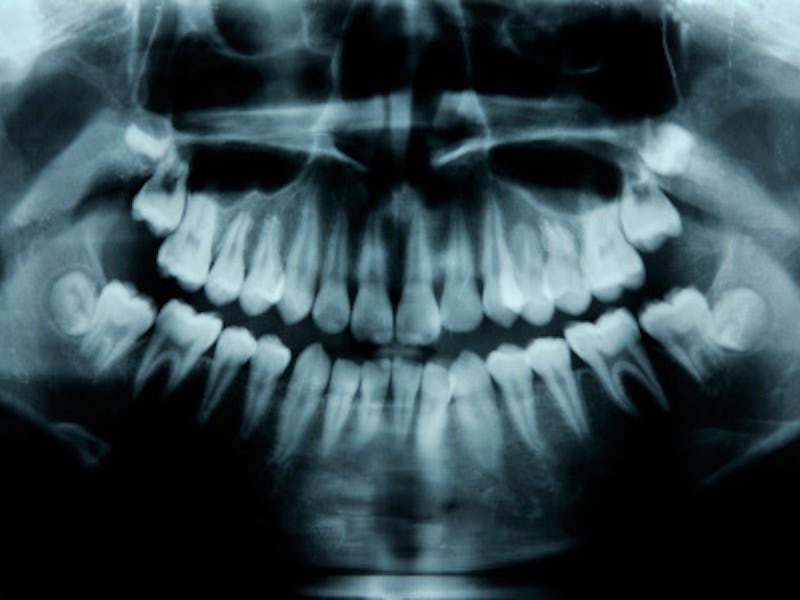A tree-like part of the body records the intimate details of a person's life
Teeth keep a diary of your life until the day you die.

Your pearly whites are capable of far more than chewing, a new study reveals. Teeth can disclose intimate details about your life.
Researchers discovered that physiologically impactful events in our lives – periods that may be stressful, such as birth, disease, menopause; incarceration – all leave a permanent record on our gnashers.
This finding was published Tuesday in the journal Scientific Reports.
From the moment they begin to form in your mouth to the day you die, your teeth act as the faithful diarist of your life. The tissue that makes this record-keeping possible is the cementum, which — until recently — has been largely unexamined from an anthropological perspective.
The cementum is a mineralized tissue that covers the root of the tooth and forms a part of the periodontium, which helps anchor the tooth to the bone. Similar to tree rings, the cementum tissue of mammalian teeth form growth lines in its microstructure.
The cementum also acts as a biological archive of major life events, this new research shows.
“Enamel and dentine, which have been already extensively studied, are able to inform about only the period during which the teeth are developing, into late adolescence,” lead author Paola Cerrito, a doctoral candidate at NYU’s Department of Anthropology and College of Dentistry, tells Inverse.
“I had the idea to pick cementum because of the potential for illuminating life history events throughout life from the time of a tooth's eruption till death.”
Why teeth can record your life
Cerrito and her colleagues analyzed 47 teeth from 15 individuals, whose ages ranged from aged 25 to 69 years old. The teeth were obtained from a skeletal collection of Central African Malawians of Bantu origin, and the life history of the teeth’s owners — their medical records, lifestyles, etcetera — were well-documented.
When the team viewed the teeth under a light microscope, they were able to see the different lines that were visible in the microstructure of the cementum and could link the lines in the teeth to the life events of their owners.
The darker "rings" on the right panel correspond to when a 35-year-old woman gave birth to two children.
“I had an ‘ah-ha moment' when looking at the thin sections [of the cementum] under the microscope and thinking that I could try to match what I saw with data regarding the specific life events of individuals,” Cerrito says.
They found a positive correlation between change in cementum and these stressful events, which had caused them to become skewed, permanently. The analysis of these lines also meant that they were able to accurately time when exactly these changes occurred.
These findings make the cementum a powerful source of insight into someone’s life. The researchers were able to tell when someone had given birth; when they had entered menopause. They even were able to tell whether someone had transitioned from a rural lifestyle to an urban one, Cerrito explains.
So far, they haven’t succeeded in being able to “tease apart the various causes of microstructural changes”, she says – meaning that, under a microscope, the changes caused by a stint behind bars and the changes caused by a spell of malaria look one and the same.
However, they are already working on rectifying this, by using elemental analysis to match specific changes in elemental ratios to specific stressors.
“New tools, methods, and discoveries are enabling us to investigate bones and teeth — the only constituents of the fossil record — as parts of a complex and dynamic organism,” Cerrito says, “and not just as static items that can be measured and compared.”
Abstract: The life history pattern of recent humans is uniquely derived in many of its aspects including an extended post-reproductive lifespan combined with short interbirth intervals. A number of theories have been proposed to explain the evolution of this unusual pattern. However most have been difficult to test due to the fragmentary nature of the hominin fossil record and the lack of methods capable of inferring such later life history events. In search of a method we tested the hypothesis that the physiologically impactful events of parturition and menopause are recorded in dental cementum microstructure. We performed histomorphological analyses of 47 teeth from 15 individuals with known life history events and were able to detect reproductive events and menopause in all females. Furthermore, we found that other stressful events such as systemic illnesses and incarceration are also detectable. Finally, through the development of a novel analytical method we were able to time all such events with high accuracy (R-squared = 0.92).